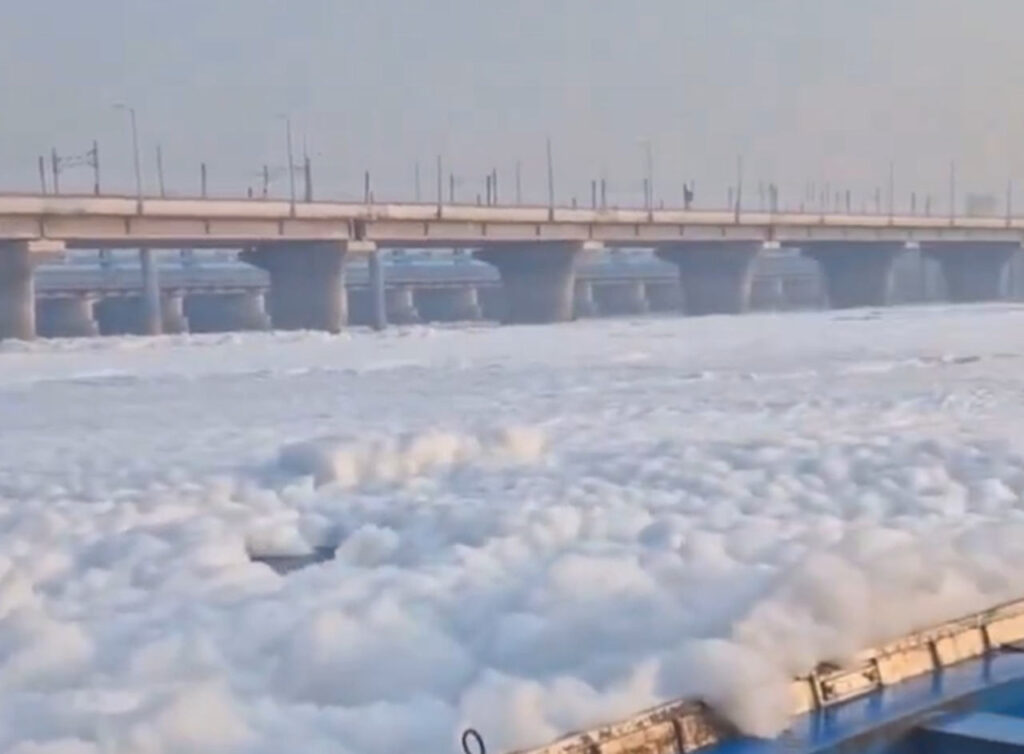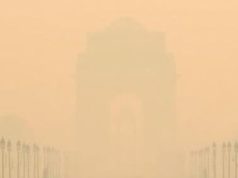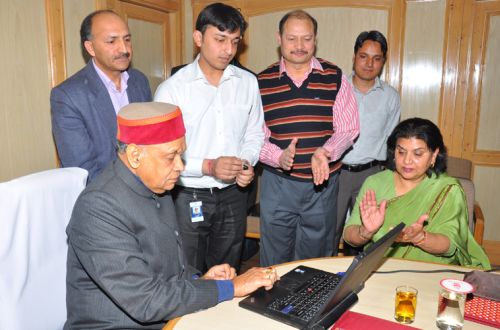Health Concerns Escalate Amid Festival Season as Pollution in Yamuna and Air Quality Deteriorates
The Yamuna River in Delhi, once again, displayed alarming signs of pollution as it was seen covered with a thick layer of white froth on Friday. This foamy layer, which environmental experts have deemed hazardous, poses serious health risks to residents, particularly with major festivals like Chhath Puja around the corner. Experts warn that these pollutants can lead to respiratory and skin problems, making the situation even more dire as the festive season approaches.
Videos circulating on social media highlighted the severity of the issue, showing large sections of the river blanketed by froth, which later dissipated. The cause of this toxic foam is linked to the high levels of ammonia and phosphates, pollutants often traced back to untreated sewage and industrial waste being discharged into the river.
Government Response: Monitoring but Limited Solutions
The ruling Aam Aadmi Party (AAP) has acknowledged the situation and assured that the Delhi government is actively monitoring the pollution levels in the Yamuna. Government engineers have been stationed at the Okhla and Agra Canal barrages to regulate the barrage gates and prevent further pollution spikes. According to the AAP, these engineers are required to upload photographs of the Yamuna at Kalindi Kunj every two hours, ensuring real-time observation of the river’s condition.
However, despite the government’s efforts, the situation remains critical. Experts emphasize the urgency of taking more substantial action, as temporary monitoring measures will not resolve the long-term pollution crisis in the Yamuna. Environmentalists stress that unless industries are held accountable and waste management systems are improved, pollution will continue to plague the river, particularly during monsoon and festive periods when these issues become more visible.
Hazy Skies and Worsening Air Quality: A Double Blow
As the Yamuna battles pollution, the air quality in Delhi has also taken a severe hit. On Saturday morning, a thick layer of smog blanketed the city, leaving residents grappling with poor visibility and health concerns. According to the Central Pollution Control Board (CPCB), Delhi’s overall Air Quality Index (AQI) stood at 273, categorized as ‘poor.’
In several areas of the city, the situation was even more alarming. Mundka and Bawana recorded AQI levels of 366, while Wazirpur and Jahangirpuri reached 355 and 347, respectively. Anand Vihar also fared poorly, with an AQI of 333. These numbers fall into the ‘very poor’ category, signaling a high risk of respiratory issues, especially for vulnerable groups like children, the elderly, and those with pre-existing health conditions.
An AQI above 300 is considered dangerous and can lead to serious health impacts. As temperatures dropped to 20.2 degrees Celsius, the city’s hazy mornings and high humidity levels compounded the problem, trapping pollutants in the atmosphere. The India Meteorological Department (IMD) has predicted clear skies during the day, with a maximum temperature of 36 degrees Celsius, but this is unlikely to improve the air quality in the short term.
Long-Term Consequences and Call for Action
The pollution in both the Yamuna and the air is not just a short-term issue but reflects a larger environmental crisis that Delhi has been grappling with for years. The onset of winter and the festival season typically brings a surge in pollution levels, worsened by the burning of agricultural residue in neighbouring states.
With the capital’s pollution levels already peaking ahead of Diwali, experts are calling for urgent interventions. “The froth in the Yamuna is a clear sign of how our water bodies are choking under the weight of pollution,” said environmental scientist Dr. N.K. Rawat. “These pollutants don’t just affect aquatic life; they pose serious health risks to humans. The air quality, too, is a ticking time bomb.”
Environmentalists are urging the government to strengthen regulations around industrial waste discharge and implement stricter penalties for violations. Additionally, measures like planting more trees, promoting public transport, and enhancing waste management systems are vital in addressing the root causes of pollution.
The next few weeks will be critical for Delhi as it braces for further deterioration in both air and water quality. The government’s response and action during this period could determine whether the city can mitigate the damage or face a worsening environmental and public health crisis.







